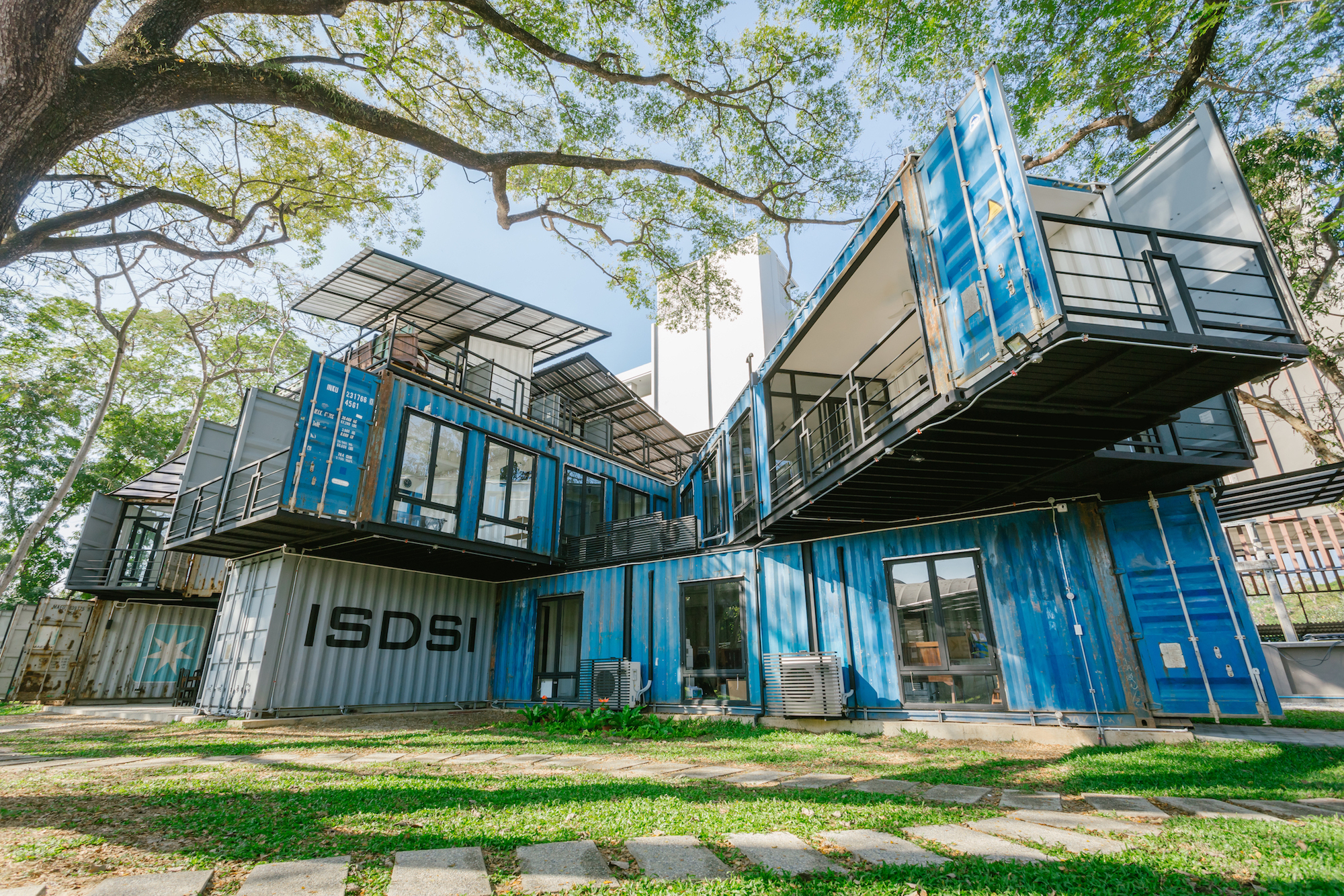This educational institute teaches students how to live a more sustainable life.
Proving that it’s not what you say, it’s what you do that matters, the International Sustainable Development Studies Institute in Thailand has just built a new campus made almost entirely out of recycled materials.
American students already at a college in the US can come to the institute to study a programme of sustainability that encompasses Thai Language and Society, sustainable food systems and the ecology of the forests.

When the university needed a new campus, it fell on its own teaching to source a solution, opting for decommissioned shipping containers.
Container ships are responsible for 60% (by value) of the global shipping trade. Every year they cross the world’s oceans carrying over 1.7 billion tons of cargo. But what happens to them when they are no longer needed?

Some of them get turned into buildings for people to live and work in. Global coffee chain Starbucks, for instance, has used them to build a drive-through coffee shop.
The brand new campus uses 17 containers, sourced from the ports in Bangkok. The containers have been fitted together to create different-sized classrooms and common areas, with as much natural light weaved into the design as possible.
Saving energy
The institute says that using the containers is a more sustainable option for two main reasons. Firstly, it reduces the reliance on concrete for construction.
The production of concrete creates a significant amount of greenhouse gases. In this design, the containers sit on a concrete pad and are welded to embedded steel plates, a method which uses less concrete than traditional construction methods.

Secondly, the institute says that reusing the steel container, as opposed to melting it down and recycling it, saves energy.
“By up-cycling the steel, they are kept out of the waste stream, and allow us to learn (and teach) about how to use the hundreds of thousands of containers sitting in the ports of the Global South,” the institute explains in a press release.


In addition, the new plot featured over 10 trees, and the institute designed the building to leave them in place, tucking the containers underneath.
Any off-cuts from the steel container created during the assembly of the campus were saved and used in other areas such as interior walls and doors, sinks or counters.
Although the containers are insulated, the institute says it will still have to rely on air conditioning to keep them cool, though it hopes to minimize the impact by reusing existing units and decentralizing their control to a room-by-room basis.
According a blog posted by Discover Containers, controlling the environmental conditions and protecting against the elements were some of the biggest issues raised when residents were asked about living in homes built from similar steel containers.





















